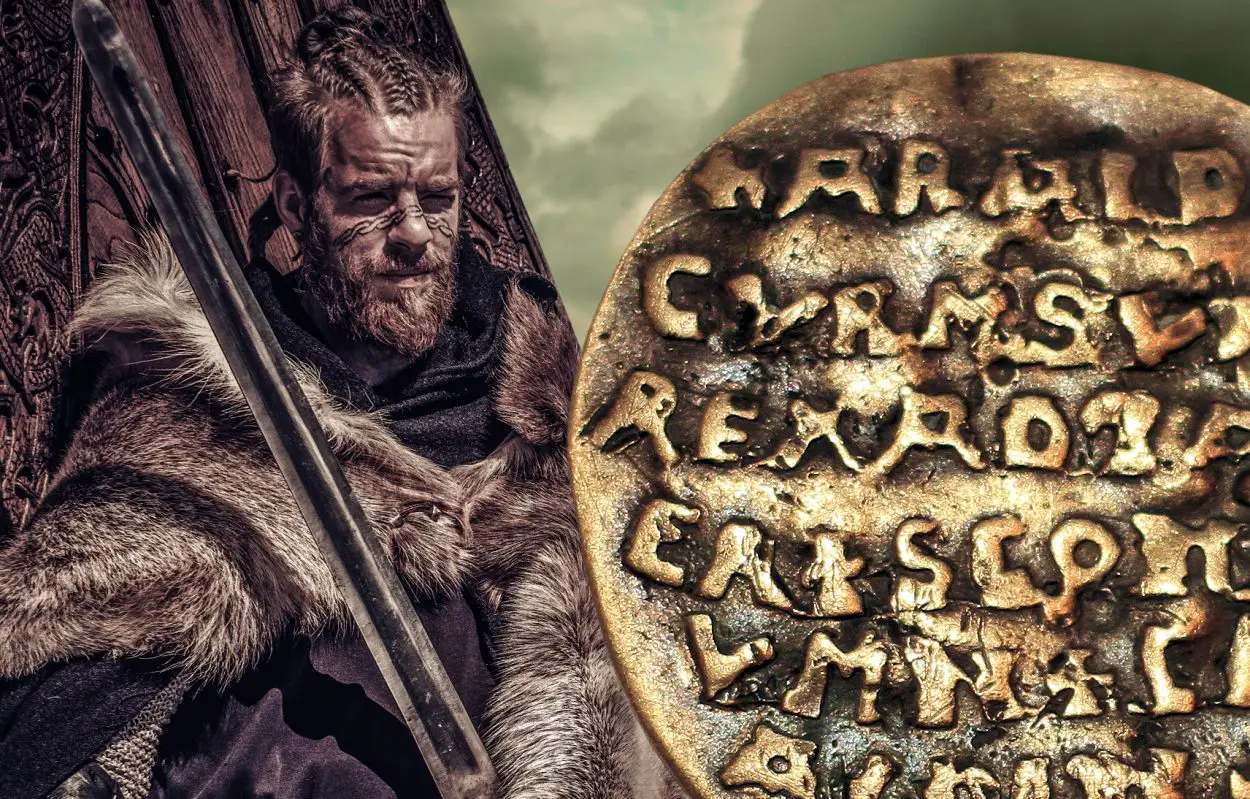Archaeologists have identified the possible burial site of Harald “Bluetooth” Gormsson, using satellite data from the Polish village of Wiejkowo.
Harald “Bluetooth” Gormsson was king of Denmark from AD 958 to 986, consolidating his rule with most of Jutland and Zealend. Harald is credited with uniting the Scandinavian countries by introducing Christianity, and gained the nickname Blåtand (meaning blue tooth) because of a dead tooth that chroniclers described as dark blue.
During his reign, Harald oversaw the reconstruction of numerous public works, including the refortifying of the fortress of Aros, construction of several ring forts, and the commissioning of the Ravning Bridge that crossed the meadows of Ravning Enge at Vejle River.
The biography of Harald Bluetooth is summed up by a runic inscription on the Jelling stones which records:
“King Harald bade these memorials to be made after Gorm, his father, and Thyra, his mother. The Harald who won the whole of Denmark and Norway and turned the Danes to Christianity.”
In more recent years, the Bluetooth wireless technology used to connect devices was named after Harald, based on an analogy that the technology would unite devices the way Harald united the tribes of Denmark into a single kingdom. The Bluetooth logo consists of a Younger Futhark bind rune for his initials, H (ᚼ) and B (ᛒ).
A research team led by Marek Kryda applied space-based reconnaissance over the landscape around Wiejkowo to search for archaeological disturbances, some of which can register as small as 30 cm in length. The study revealed a large Viking Age burial mound beneath the Roman Catholic Church of Immaculate Conception of the Blessed Virgin Mary in Wiejkowo, which was later confirmed using ground-penetrating radar.
The rediscovery of a gold disc back in 2014, known as the Curmsun disc, had previously led to speculation that Harald was buried in the vicinity. The disc has a Latin inscription that described the “ruler of Danes, Scania and the Viking fortress of Jomsborg”, of which is the present-day town of Wolin just 3.5 miles west of the Wiejkowo.
The researchers believe that the disc was originally buried alongside skeletal remains, which was discovered as part of a Viking Age hoard in 1841 beneath the church where the burial mound has now been identified.
Reports at the time described a silver coin from Otto I’s reign, a bracelet in bronze with a dash decoration covering the surface, a fragment of another bronze bracelet, a small, stamped piece of gold and the Curmsun Disc.
After its original discovery, the hoard was left in the crypt until 1945, when a Polish army major, Stefan Sielski, and his brother Michal entered and seized what was left. The disc would only be rediscovered in 2014, when Sielski‘s 11-year-old great-granddaughter found the artefact in a hidden chest stored with old buttons.
Header Image Credit : T – CC BY-SA 3.0





